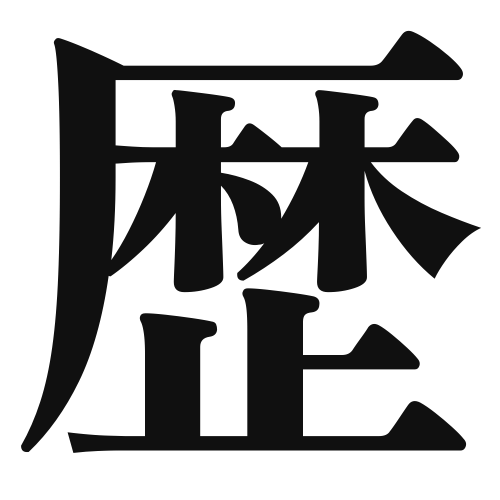1. Overview of Meaning
The kanji 歴 (reki) means “history” or “chronicle.” It refers to the record of past events and experiences, often emphasizing the passage of time and the importance of learning from the past.
2. Formation and Radicals
Formation of the Kanji: The kanji 歴 is a compound character (会意文字) that combines elements to convey its meaning. It consists of the radical 彳 (to walk) and the character 歴 itself, which suggests the idea of moving through time.
Radical: The radical for 歴 is 彳, which relates to movement or walking, symbolizing the journey through time and history.
3. Examples of Usage
Common Words and Phrases:
- 歴史 (rekishi) – history
- 歴代 (rekidai) – successive generations
- 歴史的 (rekishiteki) – historical
Example Sentences in Daily Conversation:
- 日本の歴史はとても興味深いです。
(Nihon no rekishi wa totemo kyōmi-bukai desu.)
(Japanese history is very interesting.) - 彼は歴代の王について研究しています。
(Kare wa rekidai no ō ni tsuite kenkyū shiteimasu.)
(He is researching the successive kings.)
4. Synonyms and Antonyms
Similar Kanji:
- 史 (shi) – This kanji also means “history,” but it often refers to historical records or chronicles specifically, rather than the broader concept of history.
Antonyms:
- 未来 (mirai) – future, which represents the time yet to come, contrasting with the past represented by 歴.
5. Cultural and Historical Background
Relation to Japanese Culture: The concept of history is deeply embedded in Japanese culture, with a strong emphasis on learning from past events. Festivals and traditions often commemorate historical events.
Proverbs and Idioms:
- 歴史は繰り返す (rekishi wa kurikaesu) – “History repeats itself,” highlighting the importance of understanding history to avoid making the same mistakes.
